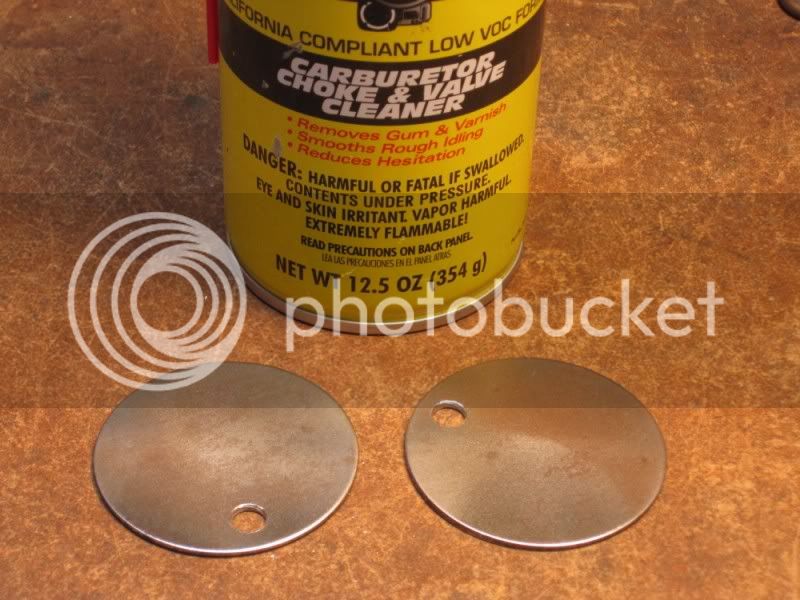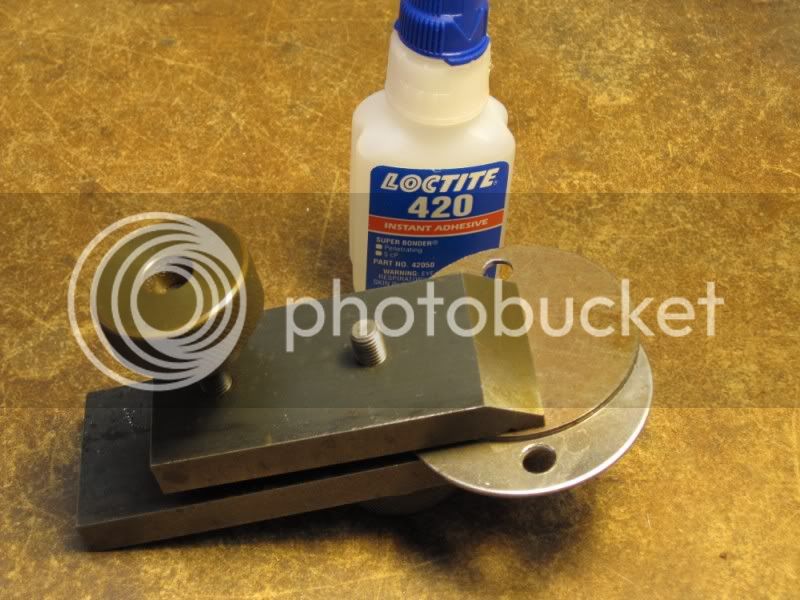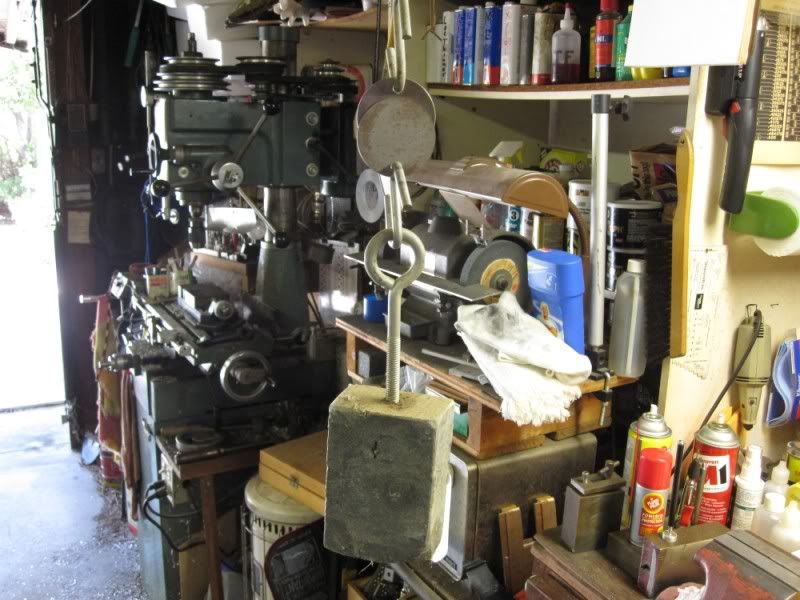mklotz
Well-Known Member
Two 1/16" thick steel coupons...

Degrease throughly with carburetor cleaner. Clamp together tightly. Apply three drops of Loctite 420 to the joint WHILE CLAMPED.

Wait 24 hours. Sorry, I don't have any pictures of the waiting.
Attach glued coupons to chain and suspend 11 lb. lead brick* from them...

as proof of the bond's ability to resist strain.
OK, what's the application?
The crankshaft for the steam roller is made up of subassemblies. These subassemblies are assembled with Loctite (609) and then pinned. The subassemblies are connected with interference fits then mounted on the lathe and aligned using a DTI. Once aligned, they're moved to the mill and drilled and pinned to maintain the alignment.
The problem is maintaining the alignment during the drilling and pinning operations. I can't use Loctite when assembling the (hammer adjustable) interference fits because it sets up too quickly.
What's needed is a strong adhesive that can wick into an already assembled joint and freeze it with enough "grab" so that the drilling and pinning won't disturb the alignment.
Most cyanoacrylate glues won't wick worth a tinker's dam. Apparently Loctite is aware of the problem and has produced this (new to me) product to overcome this limitation. Knowing that Loctite makes good products (insert standard disclaimer here), I bought some of the 420 and did the proof test described above to see if it might solve my problem. It looks like it might.
I can think of a number of modelmaking situations where a strong wicking adhesive would be very useful. This stuff isn't cheap - about $23 per oz. (hey, cheaper than perfume or printer ink) but it has the potential to solve a lot of problems.
--
* Before somebody asks, the lead brick is from my backyard model of Fermi's original nuclear reactor. Just kidding, but it is from a research project I did at university.
Just kidding, but it is from a research project I did at university.

Degrease throughly with carburetor cleaner. Clamp together tightly. Apply three drops of Loctite 420 to the joint WHILE CLAMPED.

Wait 24 hours. Sorry, I don't have any pictures of the waiting.
Attach glued coupons to chain and suspend 11 lb. lead brick* from them...

as proof of the bond's ability to resist strain.
OK, what's the application?
The crankshaft for the steam roller is made up of subassemblies. These subassemblies are assembled with Loctite (609) and then pinned. The subassemblies are connected with interference fits then mounted on the lathe and aligned using a DTI. Once aligned, they're moved to the mill and drilled and pinned to maintain the alignment.
The problem is maintaining the alignment during the drilling and pinning operations. I can't use Loctite when assembling the (hammer adjustable) interference fits because it sets up too quickly.
What's needed is a strong adhesive that can wick into an already assembled joint and freeze it with enough "grab" so that the drilling and pinning won't disturb the alignment.
Most cyanoacrylate glues won't wick worth a tinker's dam. Apparently Loctite is aware of the problem and has produced this (new to me) product to overcome this limitation. Knowing that Loctite makes good products (insert standard disclaimer here), I bought some of the 420 and did the proof test described above to see if it might solve my problem. It looks like it might.
I can think of a number of modelmaking situations where a strong wicking adhesive would be very useful. This stuff isn't cheap - about $23 per oz. (hey, cheaper than perfume or printer ink) but it has the potential to solve a lot of problems.
--
* Before somebody asks, the lead brick is from my backyard model of Fermi's original nuclear reactor.




